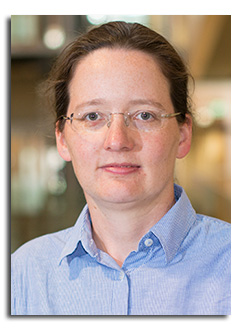
Abstract
Hybrid metal halide perovskites (stoichiometry AMX3 have recently emerged as low-cost active materials in PV cells with power conversion efficiencies in excess of 20%. In addition, hybrid perovskites show prospects for applications in low-cost light-emitting diodes and lasers.
Here we discuss how parameters essential for photovoltaic operation, such as charge carrier recombination and diffusion lengths are altered with substitutions of the organic A cation (e.g. methylammonium versus formamidinium), the metal M cation (e.g. Pb2+ or Sn2+) and the halide X anion (I versus Br). We analyze distinct charge-carrier recombination mechanisms, such as trap-mediated, bi-molecular (electron-hole) and Auger recombination, which show different dependences on composition and temperature. We further show that charge-carrier mobilities in mixed-halide perovskites are significantly lowered in the presence of halide segregation, which can however be avoided through careful choice of the A cation thus opening the possibility for perovskite absorbers in tandem with silicon solar cells.
We use these insights to predict charge-carrier diffusion lengths and radiative efficiencies in the limit of ultra-low trap-related recombination, which could potentially be reached through further advances in material processing. We find that for hybrid lead iodide perovskites with typical charge-carrier mobilities of ~30cm2/(Vs), charge-carrier diffusion lengths under solar irradiation are unlikely to exceed ~10microns even if all trap-related recombination is eliminated. We further show that if high radiative efficiencies are to be obtained for intermediate charge-carrier densities (n~1014cm-3), trap-related recombination lifetimes need to exceed microseconds.
Click here to see all available video seminars.
Click here to go to the SPREE HOMEPAGE.
Brief Bio
Laura Herz is currently a Professor of Physics at the University of Oxford. She received her PhD in Physics from the University of Cambridge in 2002 and was a Research Fellow at St John's College Cambridge from 2001 - 2003 after which she moved to Oxford. Her undergraduate degree in Physics was obtained from the University of Bonn and included two years as exchange student at UNSW (School of Physics) in 1996 and 1998. Her research interests lie in the area of organic and organic/inorganic hybrid semiconductors including aspects such as charge-carrier dynamics, self-assembly, nano-scale effects, energy-transfer and light-harvesting for solar energy conversion.
